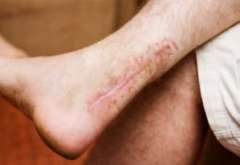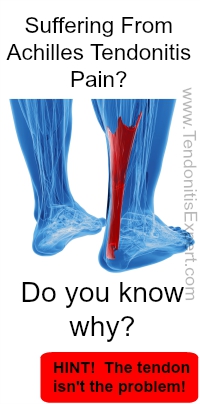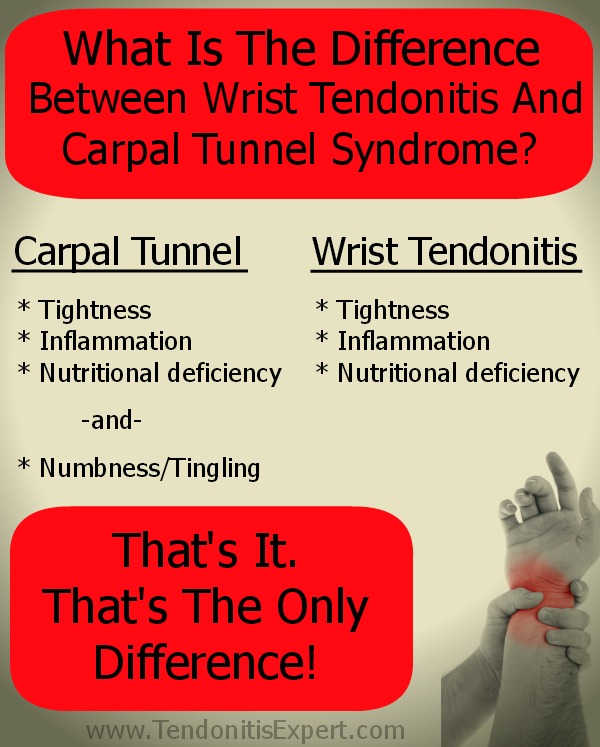Achilles Tendonitis
The Missing Piece To
Being Pain Free
You’re a prime candidate for acquiring Achilles Tendonitis if you’re a runner or some other kind of athlete requiring heavy use of your calves and their attached tendons.
Then again, -anybody- can get tendonitis of the Achilles tendons. All for very predictable reasons (it's NOT the activity!)
Perhaps you have Achilles Tendon pain from cycling. Or standing at work. Or walking around a lot. Anything we do on our feet uses our lower leg structures, and the Achilles tendon bears LOTS of torque, force, load, etc.
The physical dynamic called Tendonitis can show up anywhere. On the Achilles Tendon is as good a place as any.
But you should know, the tendon pain IS NOT THE PROBLEM. It's the symptom.
Let's Talk Achilles Tendonitis
It's not 'Repetitive Strain'. That's old news. The term is still used by those that think that activity is the cause.
Protip: it's not.
Sometimes Achilles injury is a work related injury and one can put into a work accident claim. Most people have Achilles pain directly from running type activities, though ANYBODY can get Achilles Tendonosis or tendonitis.
Why? There are MANY factors that go into this progressive dynamic.
The Achilles Tendon attaches to the two major muscles of the lower leg, the Gastrocnemius and the Soleus. These are incredibly powerful muscles that produce huge mechanical force.
The tendon is the cable that connects those muscles to the bone of your heel bone, the Calcaneus.
The job of the Achilles Tendon is to transfer the mechanical force the muscles produce to the heel bone, to change the angle of your foot.
If you’re a runner or hill climbing cyclist, it’s doing this to a high degree over and over and over.
But really, Repetitive Strain Injury (RSI) isn't the problem. Reduced ability to function correctly, is.
Even though there is repetitive movement involved, this
tendonitis isn't from the friction or the repetition, it's from three main factors: too tight muscle and connective tissue, inflammation process, and nutritional lack.
When muscles are too tight, they can't work optimally, which means
that they can't absorb force optimally, and all that force has to go
SOMEWHERE.
In the case of Achilles Tendonitis Symptoms, they occur mostly because the tendon is absorbing load that muscles -should- be absorbing, which increases the irritation, which increases inflammation process and tightness and nutriitonal lack.
The Symptoms Of Achilles Tendonitis
Achilles Tendonitis Symptoms can be mild and nagging or entirely debilitating. Try running a marthon with BAD tendonitis of the Achilles tendon...good luck.
The Symptoms of Achilles Tendinits are:
* Ache and/or pain in and in the area under the calf muscles, anywhere along the tendon that attaches to the heel bone.
Depending on whether it's Acute or Chronic, pain will either get worse with amount and duration of movement (Acute) or get better as you 'warm up' or stay the same (Chronic)
* Sharp and/or shooting pain in the same area as above.
Also primarily when using the lower leg.
* Rarely causes Numbness but can.
* Like all Tendonitis you probably felt some pain when this first started, and ignored it, and now it won't go away and it's limiting your activity.
* Redness on the skin and/or swelling from Inflammation.
* Stiffness in the effected area when getting out of
bed in the morning. Metablolicly your tissue is literally at it's
coldest and least mobile/flexible.
* Pain/Problem farther up the leg
A lower leg that doesn't work correctly isn't absorbing force like it's supposed to. And that force has to go somewhere, for instance, farther up the leg.
Find out more about Achilles Tendonitis Symptoms.
I'd say it's high time to look at your Achilles Tendinitis Treatments options.
What Causes Achilles Tendonitis
Achilles Tendonitis is caused by/can caused by:
- Too much load and/or stretch on the tendon
- Weakening of the tendon due to Tendinosis
- Weakening of the tendon structure due to Tendonitis and the body’s natural healing process
- The Pain Causing Dynamic
But ultimately and primarily, it is caused by:
- TOO TIGHT MUSCLE AND CONNECTIVE TISSUE
- INFLAMMATION
- LACK OF SPECIFIC NUTRITION
Make sure that you fully understand the Tendonitis dynamic to fully understand what's happening with your Achilles Tendonitis.
See: What Is Tendonitis?
Just like foot pain after running isn't (for the most part) caused by a foot problem, achilles tendon pain isn't caused by the achiles tendon. Or said another way, the tendon isn't the cause of the problem nor even the location of the problem.
Too much load/stretch on the tendon
When you overstretch your Achilles Tendon, put too much weight for it to hold, use it over and over and over under duress, you can get microtrauma to the tendon.
One DOES NOT WANT TO STRETCH THE ACHILLES TENDON!
This means that you get tiny little rips and tears in the tendon tissue. Then you get Process of Inflammation and a Pain Causing Dynamic.
Running or sprinting without proper warm up, excessive hill running, the use of the wrong running shoe, are among the many potential causes that can all lead to tendon damage.
Of course, the REAL issue is lack of function. When too-tight muscles and connective tissue can't absorb force like it's supposed to, that force has to go somewhere......which is the tendon and tendon attachments.
Microtrauma and inflammation certainly doesn't help anything.
A Couple Testimonials
"I started walking again after 3 monhs of not being able to walk. My knees actually locked up for a month due to inactivity followed by a sprain after a light activity. All tha tis behind me now and I am walking again. Or should I say, I am learning to walk again..
I am a believer in your program. I am preaching it to everyone that I know has a joint or tendon issues.
Sometimes, it makes me angry to think about all the doctors I visited and how some of them try to allude that bone spur removal surgery is the solution to my problem. I shudder to think where I would have ended up if I went down that route."
Mark K.
-------
"Hi Joshua, I just want to send you an email and thank you for your book on Achilles tendonitis.
Your regimen is the only thing that has helped me. I am so extremely grateful, you have no idea! I have had A.T. on both legs for 9+ years. I have tried everything! I even had surgery where they debrided the area and cut my gastroc tendons. Besides surgery, I tried PRP, prolotherapy, massage, Rolfing, PT every week for one year (!), heel lowering exercises, etc.
I used to be a runner and triathlete. I had to stop running because of the constant pain. I started hiking instead. A few months ago, I went on a big hike and the next day I could barely walk. I was so upset. That's when I found your website and bought your book. After one day of doing all the things you talk about in your book I felt a shift.
It was literally the first time I've had any improvement! I've been doing your protocol for a few months now, and I see at least an 80% improvement.
It's the first time in a long time that I have hope that I'm going to eventually be pain free. I am soooooo excited! So, thank you, thank you, thank you!!"
Kathy H.
Achilles Tendonosis
The Achilles Tendon does not have a tendon sheath, per se. It does have a layer of less dense connective tissue surrounding it that helps serve the same purpose.
The Achilles Tendon itself is a big, thick tendon, with a poor blood supply. The surrounding layer of 'almost tendon' also has a poor, indirect blood supply.
Muscles have a direct blood supply. Tendons (and joints too) only get circulation from gravity, squeezing (like a sponge) by contracting/relaxing or massage, and movement.
Less blood flowing to the tendon means that it gets less necessary nutrition, oxygen, and the other benefits of circulation.
Tendonosis is a situation where the tendon is not getting enough blood/circulation, and a resulting degeneration of the tendon happens.
Tendinosis causes specific areas where the tendon degenerates.
Achilles Tendonosis is a big problem..because the achilles tendon is big and carries such a heavy load. The more achilles tendonosis eats away at the structural integrity of the Achilles tendon....the more likelyhood there is for failure of the structure. Which means Achilles tear or rupture.
In addition to the degeneration damage, off you go running
hills and overstretching and overloading your tendon, and microscopic
rip and tear damage happens more easily, leading to Tendonitis and at
the worst end of the spectrum, a complete Achilles Tendon Rupture.
Achilles Tendonosis generally doesn't heal all by itself. It needs help. If the tendon was getting adequate blood supply in the first place (and if too tight muscles weren't pulling it extra taut 24/7) Achilles Tendonosis would never set in.
-- Watch This Video On Why Achilles Tendonitis Is NOT A Tendon Problem --
Tendonitis Weakens Tendons
When you get microtrauma to a tendon, you not only get Inflammation and a Pain Causing Dynamic, but the body does it’s thing to heal itself.
The problem with Tendonitis and Achilles Tendonitis is that the way the body heals itself, it is not as structurally strong as it was before.
So it’s then easier to get more microtrauma even if the original Achilles Tendonitis pain went away.
When the pain goes away, we get the pleasure of thinking that we are healed. Yet when we get active again, pain inevitably returns.
The most common spots for Achilles Tendinitis pain is anywhere from where the tendon meets the heel to a couple inches up the tendon.
Depending on the variables, you can have acute or chronic injury.
While it is possible to have a one time event injury that causes you Achilles pain, it is almost certain that long before you felt any pain you were already developing a Pain Causing Dynamic.
This weakening of structural integrity can lead to Achilles Tendon Tear and Achilles Tendon Rupture.
** Another aspect at play is the progressive inability of the
calf muscles to fire optimally, which means they aren't absorbing force
optimally. Which means that force is going -somewhere-. And that
somewhere is usually the spot on the tend where there is pain,
tendonitis, bone spur, etc.
Chronic Achilles Tendonitis
 |
long enough and you could end up with this! |
If you are a moderate exerciser, take care of yourself, and do all the right things, you can still get some damage.
If you are like most people that get Achilles Tendonitis, you experience a little pain in your Achilles, and rest and stretch a little, then exercise some more, feel pain again, and use anti-inflammatory medicine ‘as necessary’.
You have learned to ‘manage’ your pain.
Chronic Achilles Tendinitis can be managed. But who wants to live with pain? I assert that you just haven’t found the right solution yet.
A couple important thing to know about Chronic Achilles Tendinitis (tendonitis in general, really) are that Rest can’t heal it, and it won’t go away on its own. It needs help.
Especially if you want to stay active or become even more active.
And Anti-inflammatory drugs like Ibuprofen are fine to get you through a day, but don't stop the inflammatory process.
---- RELATED: Structural issues keep the lower leg and foot from operating properly. The factors involved in creating Achilles tendonitis are also at play in the occurance of Turf Toe.
---- RELATED: As there are various structures of the lower leg, Peroneal Tendonitis plays a role. The Soleus and Gastrocs and Achilles may still be affecting other structures, and vice versa.
----- RELATED: Achilles tendinitis can also cause Big Toe Joint Pain.
Acute Achilles Tendonitis
Maybe you had some pain before, or maybe you had never felt Achilles Tendonitis pain before.
Then one day you did your normal thing, or you went on an extra long run or other activity. (I went for a two mile hike once and got lost. About ten miles later I finally made it back to civilization an hour after the sun had gone down. My reward was shin splints.)
It is not uncommon to have a sudden onset of Achilles Tendon pain. Overload the tendon repetitively leads to damage leads to inflammation and pain.
Acute means that it is new and ‘fresh’ and extra painful, with the inflammation process in full swing.
With sudden onset pain, you also need to be aware of the possibility of a Torn Achilles Tendon. Unless it’s a big, significant tear, utilize the Treatment page from the link at the bottom of the page. Major tears may require surgery.
**** Note: You can have debilitating pain with NO injury at all.
It Would Have Been Smart To
Prevent Achilles Tendonitis
Ahhh, but we’re only human. We rarely pay attention to our health until pain alerts us to a problem.
Before we move on, heed the following warnings.
Here are some guidelines to prepare your body to happily withstand that which you demand of it:
1. Always warm up before putting strain on your Achilles.
You want your tendons to be like bungee cords, not cold, frayed steel wire cables.
Walk around, rise up on your toes, and rub them with your hands. Get blood and nutrition into the area.
Speaking of smart...you'll appreciate what you find in the free 7 Day Achilles Tendonitis E-Course. Sign up below.
Eccentric Heel Drops are a great way to both warm up and prep your muscles for exercise.
You absolutley want to avoid getting an Achilles Tendon Tear.
2. Slowly increase your training times on hills and stairs, don’t just jump right into training for your personal best.
Allow your structure to strengthen up gradually so it can do the work without damage.
3. DON’T stretch your Achilles until you feel pain.
Avoid the sensation of pain at all costs (there's good pain, and there's bad pain, so pay attention) when stretching. This is a general and all-encompassing rule of stretching, in my professional opinion.
This kind of pain is bad. Don’t go there.
Also, DON'T STRETCH YOUR ACHILLES TENDON. YOU DON"T WANT TO STRETCH A TENDON.
Along those lines, DON'T focus on Achilles Tendon Stretching! The Achilles Tendon does NOT need to be stretched. Instead, focus on the muscle structures connecting to the Achilles Tendon needing to be LENGTHENED.
4. Stay VERY hydrated
Dehydration is B.A.D. for connective tissue. You want to be a wet squishy sponge, not a dry crunchy sponge.
5. 1-4 were basics. Here's an easy thing that will make the biggest difference:
Keep your muscles loose! Use massage, self massage, etc (as opposed to stretching) to keep connective tissue from shrinkwrapping down, and to keep the muscles extra loose and extra juicy. Massage in there and find what's tight and/or painful and rub it, over time, till it's not.
The softer and looser a muscle is, the more strength potential it
Nutrition also plays a HUGE role. If your tendon doesn't have or get the nutritional building blocks that it needs to stay strong....it can't stay strong.
The Achilles Treatment Is The Same
Whether your tendon pain is from Tendinosis or Tendonitis (or both), the treatment is the same.
Whether your pain is new or old, chronic or acute, the treatment is the same.
If you want to deal with all the negative factors at play, if you want your pain to go away and are willing to put in a little effort for big results, find out about The Fix Tendonitis Program.
The Fix Tendonitis program is a powerful tool (if you use it), and will do the most good for the most people, and you just can't beat the price.
NEXT PAGE --> Achilles Tendonitis Symptoms
Return to the top of this
Achilles Tendonitis page.
Go to the main Tendonitis page.
Go to the TendonitisExpert.com homepage.


